|
Have a safe day!
Thursday, April 14
2:30 p.m.
Theoretical Physics Seminar - Curia II
Speaker: Brock Tweedie, Boston University
Title: Discriminating Top-Antitop Resonances using Azimuthal Decay Correlations
3:30 p.m.
DIRECTOR'S COFFEE BREAK - 2nd Flr X-Over
4 p.m.
Accelerator Physics and Technology Seminar - One West
Speaker: Marc Buehler, University of Virginia
Title: Higgs Bosons at the Tevatron and at a Future Muon Collider
Friday, April 15
3:30 p.m.
DIRECTOR'S COFFEE BREAK - 2nd Flr X-Over
4 p.m.
Joint Experimental-Theoretical Physics Seminar - One West
Speaker: Seog Oh, Duke University
Title: Production Properties of Baryon and Meson Resonances in Jets and Minimum Bias Events at CDF
8 p.m.
Fermilab Arts Series - Auditorium
Speaker: Malika Meddahi, LHC
Title: The Large Hadron Collider (LHC)
Click here for NALCAL,
a weekly calendar with links to additional information.
Upcoming conferences
|
|
Thursday, April 14
- Breakfast: Apple sticks
- Santa Fe black bean soup
- Steak tacos
- Chicken Wellington
- Chimichangas
- Baked ham & Swiss on a ciabatta roll
- Assorted sliced pizza
- *Crispy fried chicken salad
*Heart healthy choice
Wilson Hall Cafe Menu
|
|
Friday, April 15
- Closed
Wednesday, April 20
Lunch
- Masala poached mahi mahi
- Gingered mango-cucumber raita
- Coconut rice
- Cinnamon crepes w/fresh berries
Chez Leon Menu
Call x3524 to make your reservation.
|
|
DOE's Office of Science labs make progress in understanding dark energy
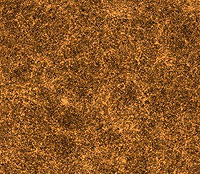 |
| A piece of the Milky Way sky. Image courtesy of M. Blanton and SDSSIII. |
From the DOE Office of Science's In Focus, April 12, 2011
Is there a mysterious source of energy driving the expansion of the universe, or is our understanding of gravity incorrect? DOE lab scientists use data from observations and images of the night sky to find out.
Since the 1920s, scientists have known that the galaxies—long thought fixed and unmoving—were actually receding deeper into the cosmos. In fact, we now know from observations of Type 1a supernovae that distant objects are speeding faster and faster away from us as the universe expands. That's because, not only is the universe expanding, it's expanding at an increasing rate. Scientists at Fermi National Accelerator Laboratory (Fermilab), Brookhaven National laboratory (BNL), SLAC National Accelerator Laboratory, and Lawrence Berkeley National Laboratory (Berkeley Lab) are eager to find out why. Recent observations by SLAC scientists and the Sloan Digital Sky Survey may provide an answer.
Read more |
Under Secretary gives energy challenge talk on April 25
The U.S. Department of Energy´s goals for meeting America´s energy challenges involve energy security; reduction in greenhouse-gas emissions; and promoting changes in energy supply, transmission, storage, and use. And even within those challenges lies another: energy change can be slow.
Dr. Steve Koonin, Department of Energy Under Secretary for Science, will give a talk on America's energy challenges on Monday, April 25, at the Chicago Public Library's Harold Washington Library Center in the Cindy Pritzker Auditorium. Koonin will discuss the technology, policy, and economic levers we can use to transform the energy system while enhancing U.S. competitiveness in the global economy. The talk will take place at 6 p.m. Registration is required and can be done prior to or beginning at 5 p.m. the day of the talk. The event cost is $10 for advance registration, $15 at the door and $5 for students. Members can attend for free, but must register.
|
New employees - March 28
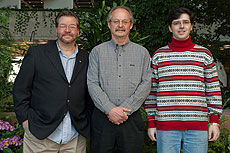 |
| Larry Palmisano, WDRS; Jack Heisler, WDRS; Boris Shteynas, APC. |
|
US budget deal – A (science) first look - April 12, 2011
From Nature, April 12, 2011
Get out your pencils and pocket calculators, the US House of Representatives Committee on Appropriations has posted the text of the 2011 budget bill that reveals – in part – the implications for scientists of a deal struck late on 8 April between the Republican-led House, the Democrat-led Senate and the Obama White House.
According to a list of reductions also available on the Committee’s website, the final deal includes over $2 billion in specific program cuts to science-related agencies (see table). However, the cuts shown below do not include a 0.2% across the board reduction to all non-defense related programs that is included in the legislation, so the overall impact will be larger.
Read more
|
South pole neutrino detector comes up empty
From Wired, April 13, 2011
After years of waiting, the world’s biggest and best neutrino detector has started its search for the source of ultrahigh-energy cosmic rays that constantly bombard the Earth’s atmosphere.
And it’s seen exactly zilch.
In 13 months of observing with the half-complete IceCube detector at the South Pole, “we didn’t see anything,” said neutrino physicist Nathan Whitehorn of the University of Wisconsin-Madison, co-author of a new Physical Review Letters paper describing the hunt. “We didn’t even have any close calls.”
The origins of cosmic rays, a constant shower of fast-moving particles from space, have long baffled physicists. Some of these particles are 100 million times more energetic than those produced at the Large Hadron Collider, the most powerful particle smasher on Earth.
Yet after nearly a century of research, scientists have no firm idea what they are or where they come from. “It’s one of these big unsolved mysteries in physics,” Whitehorn said. “What can possibly be making them?”
A top theoretical contender is gamma-ray bursts, equally mysterious cosmic explosions that can briefly outshine everything else in the observable universe. Although relatively little is known about what causes gamma-ray bursts, theory predicts that a certain fraction of their energy should show up as neutrinos.
Read more
|
|
Using a better scale
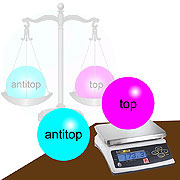 |
|
A previous Result of the Week studied the difference between the masses of the top quark and antiquark. This week, DZero returns to the question, this time with a more precise scale.
|
In July of 2009, DZero reported on a measurement of the difference between the mass of top quarks and antitop quarks. This is a very interesting topic. One of the most fundamental tenets of the Standard Model is that the laws of physics apply equally well to matter and antimatter. This is called Charge, Parity and Time (CPT) invariance. Translated into English, CPT invariance means that if we reverse the left-right directions, go backwards in time instead of forward, and swap positive charges to negative ones, that it is impossible to tell the difference between the values. One crucial consequence is that matter and the corresponding antimatter particles must have identically the same mass. In fact, this tenet is even more fundamental than the Standard Model and physicists think that any theory that describes our universe must incorporate this necessary principle.
Of course a fundamental tenet is a challenge to physicists. Finding that this tenet is false would result in a total shakeup of our understanding. While measuring the mass differences between matter and antimatter is straightforward to do for leptons, it is very difficult to do for quarks. Quarks typically interact with their surroundings in the fractions of a second after they are created and before they decay. This makes it difficult to get a good measurement of the quarks’ masses.
Top quarks have the unique property that they decay very rapidly, indeed so rapidly that they have decayed before they undergo any subsequent interactions. Thus we know the mass of the top quarks with more precision than any other type of quark. This provides an interesting opportunity to test CPT invariance, especially since we suspect that any new and unobserved physics is more likely to occur at very high masses. Given that the top quark is the highest mass particle ever discovered, measuring the differences between the masses of top quarks and antiquarks is an ideal way to study this question.
Using nearly four times more data than the previous result, DZero physicists’ new measurement is twice as precise as the earlier one. The bottom line is that there is no indication of a mass difference, which is a marvelous confirmation of CPT invariance.
- Don Lincoln
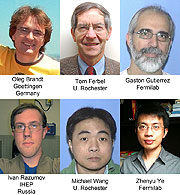 |
|
These physicists performed this analysis.
|
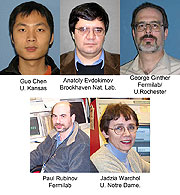 |
|
The DZero fiber tracker and preshower detectors are crucial components for many DZero analyses. These physicists are responsible for the smooth operations of these detectors.
|
|
|
April 11-13
- Two stores provided ~16.75 hours of luminosity
- MI personnel brought machine back from RF system trip
- Tevatron quenched during shot setup due to kicker prefire
- NuMI beam permit tripped due to Lambertson power supply high temperatures
- MI LCW tripped off and caused the loss of the Recycler stash
- Store 8641 quenched due to kicker prefire
- Tevatron kickers put in conditioning mode
- Kicker personnel repaired Recycler kicker
Read the Current Accelerator Update
Read the Early Bird Report
View the Tevatron Luminosity Charts
|
|